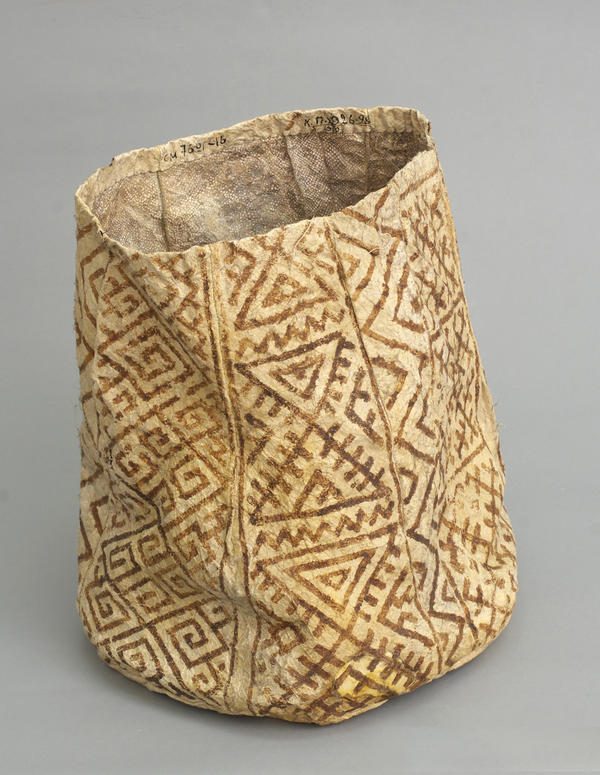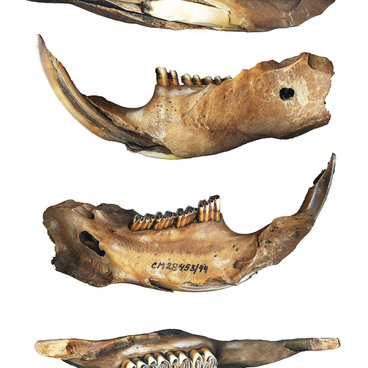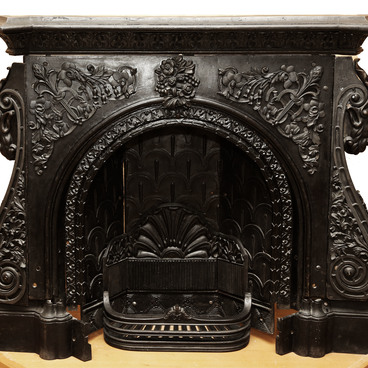This waterproof sack of the burbot skin was handmade at the end of the 19th century. It could sustain the weight of up to 30 kg and due to its sustainability was an essential thing in the household of the Finno-Ugric peoples. Such fish skin sacks were used to store various products and household goods, especially flour and grain.
Sack for Household Goods Made of the Burbot Skin
Creation period
Late 19th century
Exhibition
2
Open in app#4
Sack for Household Goods Made of the Burbot Skin
#5
#10
Ornament
#13
An unknown artisan used geometric ornaments to decorate the item. The ornament symbolized the outside world, such as earth, sky, and animals, and was a protective talisman. The ornament was painted with the help of natural dyes, among which roots and leaves of plants, soot, and tree bark were most widely used and popular at that time.
The burbot skin sack is decorated with a brawn ornament, such color was produced from the infusion of the bark of a bird cherry tree and larch.
#14
Tradition
#6
Peoples of the North had a zero-waste production as each product was used. Fish flesh was for eating, fish oil was applied to the skin to repel mosquitoes, fish scales were used to produce glue and manufacture footwear and stockings. The fibers of fish skin are closely woven, for that reason, clothes made of such a skin are very durable and it could be worn much longer than clothes made of cattle leather.
#7
In the 17th century, it was first mentioned that peoples of the North used fish skin to sew goods. In the Yesipov Chronicle it is written, ‘the Ostyaks have their clothes from fish’.
#11
Manufacture
#8
In order to make clothes or sacks, material was processed by hand. The process was difficult and took a lot of time. Only a large fish was chosen as it was easier to handle it. First, a burbot was scaled, then, it was cleaned and decorticated. Both sides of the skin were carefully scrubbed and rinsed. The clean skin was placed on a special wooden device or an even surface and left for 8-10 hours to dry. Having been dried, the skin became very rigid. Then special bone knives were used to crumple the skin on a wooden device for several hours.
#12
Items made of such skin were light and durable, secured from water and wind and was warm protective as well. They became an outstanding example of the culture of the indigenous population of the Urals and Siberia.
Nowadays, traditional industries of peoples who inhabited the current Khanty-Mansi Autonomous Okrug have almost been forgotten, however, sacks made of the burbot skin can still be found.
#15
O. E. Kler Sverdlovsk State Regional Ethnography Museum
read morehide
00:00
00:00
1x
Sack for Household Goods Made of the Burbot Skin
Creation period
Late 19th century
Exhibition
2
Open in app
Share



